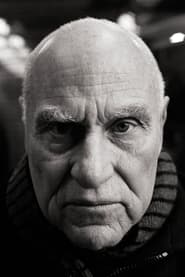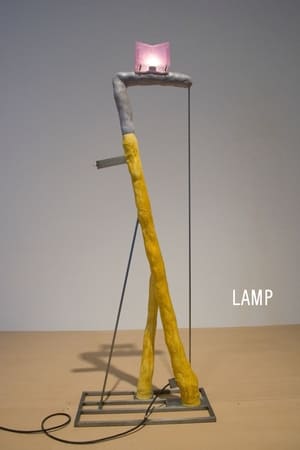
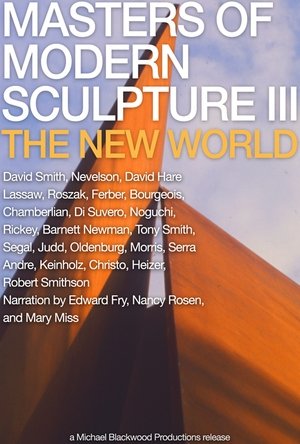
Masters of Modern Sculpture Part III: The New World(1978)
The Masters of Modern Sculpture series concludes with a look at post- World War II America, where sculpture became a deeply innovative art form. Using the objects at their disposal and the inspiration surrounding them, artists such as George Rickey, Claes Oldenburg, and Louise Nevelson cast sculptor in a new light. The New World observes the sculptors creatively utilizing wood, metals, and junkyard finds, bringing forth lively and shocking work. America's remote spaces, discarded objects and abundant materials enabled them to add to the concepts of European modernism in daringly unique ways.
Movie: Masters of Modern Sculpture Part III: The New World
Top 3 Billed Cast

Masters of Modern Sculpture Part III: The New World
HomePage
Overview
The Masters of Modern Sculpture series concludes with a look at post- World War II America, where sculpture became a deeply innovative art form. Using the objects at their disposal and the inspiration surrounding them, artists such as George Rickey, Claes Oldenburg, and Louise Nevelson cast sculptor in a new light. The New World observes the sculptors creatively utilizing wood, metals, and junkyard finds, bringing forth lively and shocking work. America's remote spaces, discarded objects and abundant materials enabled them to add to the concepts of European modernism in daringly unique ways.
Release Date
1978-12-31
Average
0
Rating:
0.0 startsTagline
Genres
Languages:
Keywords
Similar Movies
 0.0
0.0Christo: Wrapped Walk Ways(en)
Wrapped Walk Ways, in Jacob Loose Memorial Park, Kansas City, Missouri, consisted of the installation of 136,268 square feet (12,540 square meters) of saffron-colored nylon fabric covering 2.7 miles (4.4 kilometers) of formal garden walkways and jogging paths.
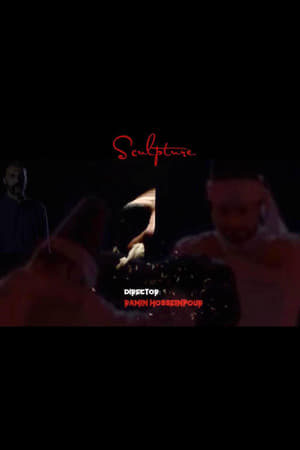 10.0
10.0Sculpture(fa)
Video art of sculpture is the real life story of Rumi (Mevlana) and Shams Tabrizi. Rumi and Shams are well known international poets of Persian language. One day, Rumi invites Shams Tabrizi to his house, Shams throws the book into the pool of water and Rumi is worried and Shams returns the book to Rumi without any trace of water. The lost half of the sculpture in the film is a representation of the same concept, in which the dance of Sama, the sculptor's mind and the role of the face are visible. "Sculpture" has won more than 57 International Awards, third place (semi-final) in called Flickers' Rhode Island International Film Festival (Academy Award ® Qualifying, BAFTA Qualifying, Canadian Screen Award Qualifying) , Crown Point International Film Festival(Chicago) ,Vegas Movie Awards,Global Shorts( Los Angeles),(US),Gold Star Movie Awards (US),One-Reeler Short Film Competition (US),Accolade Competition (US),Berlin International Art Film Festival and many other events.
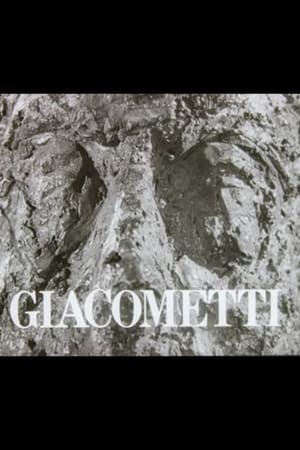 0.0
0.0Giacometti(en)
The Arts Council commissioned this film to coincide with their major retrospective of Giacometti's work at the Tate Gallery (now Tate Britain) in the summer of 1965. A similar exhibition was held concurrently at the Museum of Modern Art in New York, sealing the artist's reputation as a modern master.
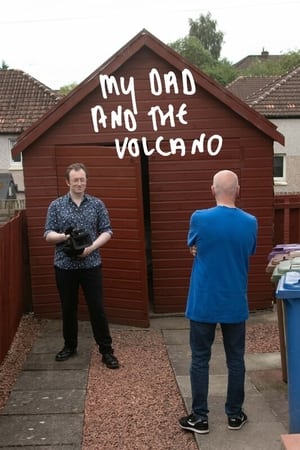 0.0
0.0My Dad and the Volcano(en)
Gavin built a giant volcano sculpture that's now in his dad's shed. Gavin seeks his dad's understanding but he's uninterested in modern art and refuses to participate in the documentary.
 8.0
8.0How to Get a Head in Sculpture(en)
From the heads of Roman Emperors to the 'blood head' of contemporary British artist Marc Quinn, the greatest figures in world sculpture have continually turned to the head to re-evaluate what it means to be human and to reformulate how closely sculpture can capture it. Witty, eclectic and insightful, this film is a journey through the most enduring subject for world sculpture, one that carves a path through politics and religion, the ancient and the modern. Actor David Thewlis has his head sculpted by three different sculptors, while the Archbishop of Canterbury Dr Rowan Williams, artist Maggi Hambling and art critic Rachel Johnston discuss art's most enduring preoccupation, ourselves.
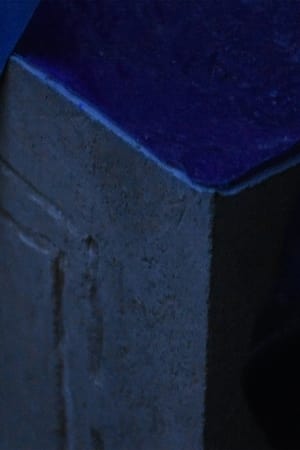 10.0
10.0I'll See You Again(it)
A group of artists settle in a swamp on the banks of the Indre River. Meanwhile, a voice describes a utopian world.
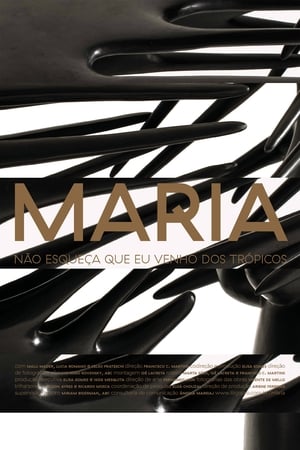 10.0
10.0Maria: Don't Forget I Come From the Tropics(pt)
An examination of the relationship between the life and art of Maria Martins, now recognized as one of the greatest Brazilian sculptors, in addition to her engravings and texts. The film reveals the greatness of her work and her boldness when dealing directly with the feminine perspective of sexuality, a transgression that led to attacks by Brazilian critics. In parallel, her life as the wife of an important diplomat and her connection to Marcel Duchamp, in a relationship of mutual collaboration between the two artists.
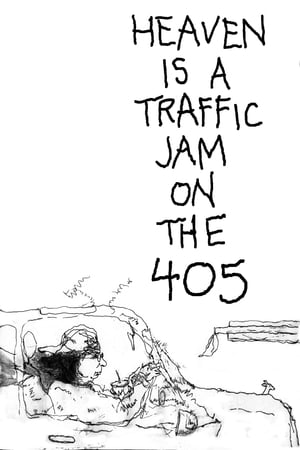 7.3
7.3Heaven is a Traffic Jam on the 405(en)
56-year-old artist Mindy Alper has suffered severe depression and anxiety for most of her life. For a time she even lost the power of speech, and it was during this period that her drawings became extraordinarily articulate.
 6.9
6.9Fire in Castilla (Tactilvision from the Moor of the Fright)(es)
A short, experimental documentary featuring sculptures by Alonso de Berruguete and Juan de Juni. Shot within the Valladolid National Museum, the film is an excercise in what Val de Omar called "Tactile vision".
The Wall Street Bull(en)
The Wall Street stock trader were astonished when they passed at a five-metre bronze statue of a bull on there way to work on December 16, 1989. Also New York's Mayor and city administration wondering who had placed the three-ton work of art there. One of the most unusual and imaginative artists of our time was behind the action: the Sicilian-born Arturo Di Modica. This is the story of the statue, which became a symbol of Wall Street.
 0.0
0.0The Chola Heritage(en)
The film highlighting the Dravidian temple architecture and bronze sculpture which attained the creative pinnacle during the rule of the Cholas in the 10th and the 11th centuries. Cholas were great temple builders. The temple of Vijayalaya Cholesvara is one of the finest examples of the early Chola style. The temple of Nagesvara at Kumbakonam is remarkable for the sculptures found in the niches of its outer walls. The Brihadesvara temple at Thanjavur is a landmark in the evolution of building art in India.Among several such unique temples, Tribhuvanam is the last important temple belonging to the Cholas. Besides temple architecture,the bronze sculpture of the Cholas holds a unique place in the field of art. One of the most important and famous of all Hindu icons,that of the cosmic dance of the Nataraja is intimately associated with the Chola bronzes.
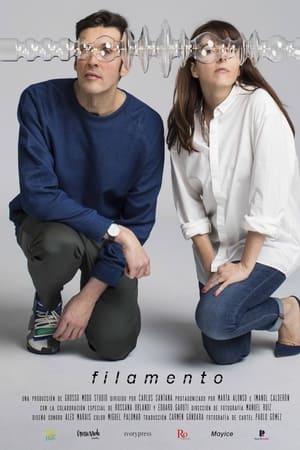 0.0
0.0Filamento(es)
The odyssey of the Mayice designers, who had to face to bring an impossible-to-manufacture piece to the Rossana Orlandi gallery, in Milan, in time to be exhibited at the Salone.
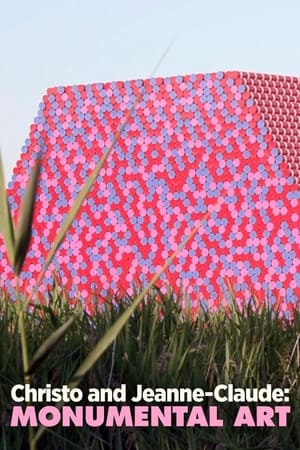 0.0
0.0Christo and Jeanne-Claude: Monumental Art(en)
In the summer of 2018, on the Serpentine in London's Hyde Park, world-renowned artist Christo created his first public work of art in the UK. Inspired by ancient Mesopotamian tombs, the Mastaba is constructed from 7,506 painted oil barrels and weighs six hundred tonnes. It is the latest work in a career spanning half a century and stretching across the world. His work to date have included surrounding 11 islands off the Florida coast with pink polypropylene and wrapping Berlin's Reichstag and the Pont Neuf in Paris. This programme charts the creation of the Mastaba - from the first barrels being put on the water to its final unveiling - and paints a portrait of Christo as he looks back on a life spent making provocative works of art with his wife and partner Jeanne-Claude.
 0.0
0.0A Scenic Harvest from the Kingdom of Pain(en)
Documentation of three Survival Research Laboratories events, 1983-1984. Meet Stu, the SRL guinea pig, and see him training to operate the 4-legged Walking Machine, see 10-barrel shotguns, hear the "Stairway to Hell".
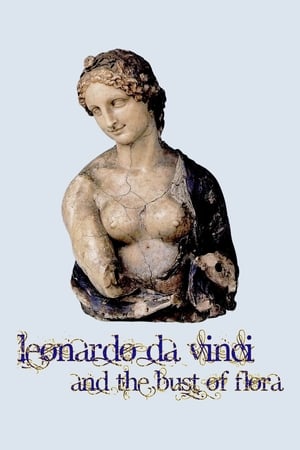 7.2
7.2Leonardo da Vinci and the Bust of Flora(de)
Acquired in July 1909 by art collector Wilhelm von Bode (1845-1929), director general of the Prussian Art Collections and founding director of the Kaiser-Friedrich-Museum, now the Bode-Museum, the Bust of Flora, Roman goddess of flowers, has been the subject of controversy for more than a century.
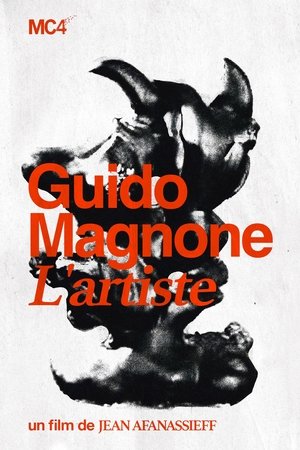 10.0
10.0Guido Magnone - The Artist(fr)
Guido Magnone designs cardboard boxes by hand for his parents' small business. A painter friend loves his brushwork and pushes him to attend the Beaux Arts. He takes an external competition, wins it, befriends the sculptors César and Féraud, surrealists, a handful of bohemians. He then discovered the mountain and quickly became one of the best climbers of his generation. He made prestigious conquests such as the west face of the Drus in the Alps, the first ascents of Fitz Roy in Patagonia with Lionel Terray or Makalu in the Himalayas... Magnone also participated in the creation of the UCPA and will be president of the Groupe de Haute Montagne from 1961 to 1965. From 1977, Guido returned to his first passion: sculpture, to devote himself fully to it around 1990. He began to exhibit again in 1996. In 2002, he exhibited his sculptures in Paris , Bourg-la-Reine, Aosta then in Etroubles in 2009.
 1.0
1.0Soft Self-Portrait of Salvador Dali(en)
A documentary about surrealist artist Salvador Dali, narrated by Orson Welles.

